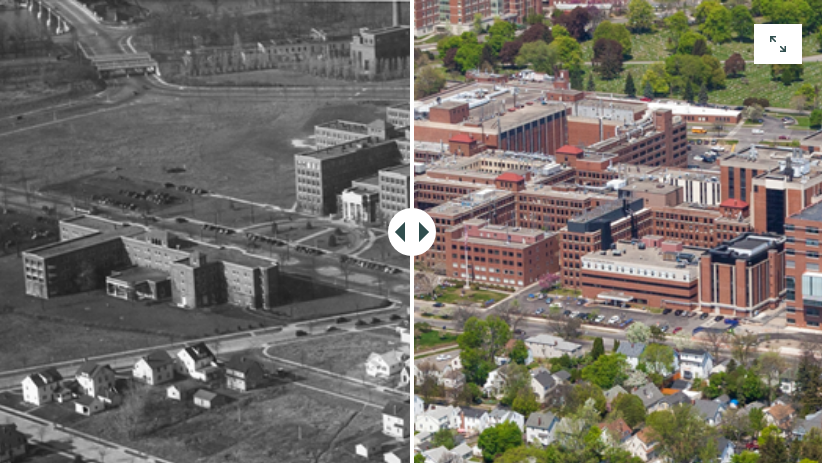Utilities and Energy Management (UEM) staff collaborated with students to complete a StoryMap titled “History of University of Rochester’s Greenhouse Gas Emissions.” The paper encompasses not only energy consumption at the University, but also energy generation as a whole. Students Harshita Mahaseth ’21 and Connor Pope ’21 worked with Energy Engineer Tim Vann, Director of Utilities and Energy Management Mike Whitmore, and Associate Professor of Earth and Environmental Sciences Karen Berger to develop the history timeline. The story begins in 1990, when the University began tracking greenhouse gas emissions, and continues through present-day and future upgrades and improvements. The interactive StoryMap features old photos and videos of the University and interactive photos that allow readers to drag arrows left and right to better visualize changes. Readers can also explore an interactive map of projects that the UEM team has completed to make the campus more sustainable.
The idea for this project came from an information guide for student-led programs to encourage engagement in multidisciplinary projects that help improve the University campus. The guide was created by a team of student volunteers, Faraan Hamad ‘22, Benjamin Kelley ‘23, and Beauclaire Mbanya ‘20, who worked in conjunction with UEM staff and academic faculty. It includes UEM contact details, assets and systems, in addition to faculty contact information, classes, research, and general interest. The first edition of the guide was completed in Fall 2020 and will continue to be updated as information and situations change. A downloadable version of the guide is available here.
UEM maintains and operates the cogeneration plant, Mid Campus Chiller Plant, River Pump house, and all associated equipment that generates, transforms, and distributes services to River Campus, Medical Center, and Mid Campus. UEM has been fulfilling the University’s energy needs for nearly 100 years and will now expand its influence to the University’s academics. The guide will help UEM staff members connect with faculty and students to collaborate on future senior design projects, research, or other opportunities. These projects will provide real-world experiences to students and demonstrate how their academic studies can apply directly to the functioning of the campus. The central benefit of this initiative for students is the opportunity to learn from hands-on experience and increase their options for future research or internships. UEM also provides guidance on finding on-campus research and internship opportunities.
The UEM Academic Collaboration Guide has helped other students and UEM staff members work together to complete different projects. Another article will feature these projects and the future improvement projects of Utilities and Energy Management as the University community unites to advance the campus and make it a more sustainable place.
Written by Emily Su, Class of 2022
Photo Credit: https://storymaps.arcgis.com/stories/63744af6797146609e66669cb5a88017

